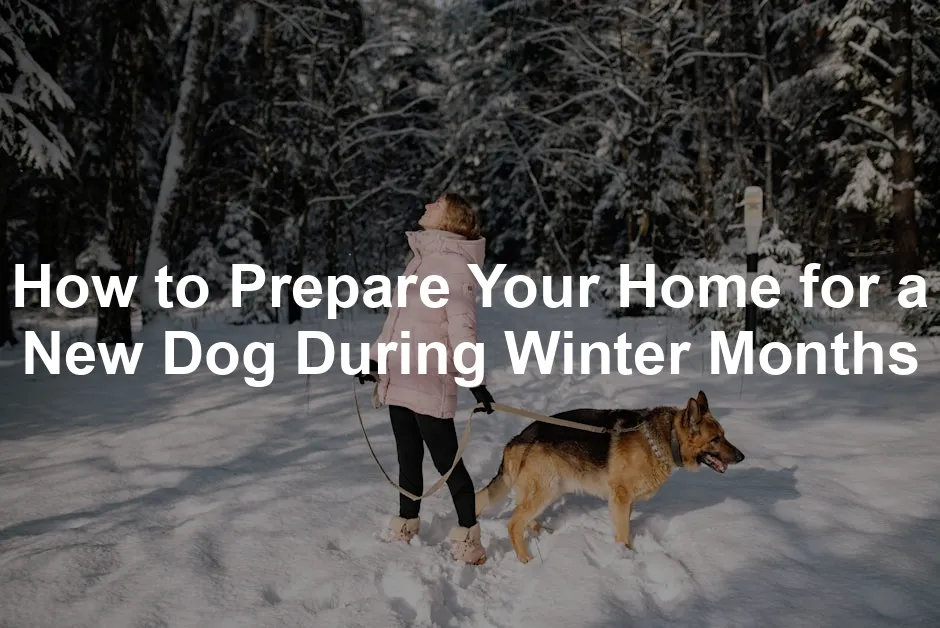Introduction
Getting a new dog during winter is thrilling. However, it also presents unique challenges. Cold weather can affect your dog’s comfort and safety. Preparing your home is crucial for their well-being. Addressing winter-specific needs helps your furry friend adjust smoothly. This preparation ensures a happy and healthy transition.
For tips on ensuring a smooth introduction between dogs and babies, consider reading this informative guide. tips on ensuring a smooth introduction between dogs and babies 2024
Summary and Overview
In this article, we will discuss vital preparation strategies for welcoming a new dog during winter. We’ll focus on three key areas: safety, comfort, and training. Understanding winter hazards is essential to keep your dog safe. Our goal is to help you create a welcoming environment for your new companion.
Preparing Your Home for a New Dog
Essential Supplies for Winter
When bringing home a new dog in the colder months, having the right supplies is essential. Start with a comfortable dog bed and warm blankets. A cozy bed provides a safe space for resting.
Next, consider winter clothing. Coats and booties are perfect for outdoor adventures. These garments will keep your dog warm and protect their paws from icy surfaces.
Don’t forget food and water bowls. Ensure they are durable and easy to clean. Invest in quality dog food to meet your new pet’s nutritional needs.
Creating a cozy and secure environment is vital for your dog’s comfort. Look for dog essentials that suit your pet’s size and breed. For winter dog gear, consider products like insulated dog jackets or waterproof jackets.
Recommended products include heated dog beds for extra warmth, especially for older dogs. Good bedding makes a difference in your furry friend’s comfort. Prepare your home with these essentials to ensure a smooth transition for your new dog.

Puppy-Proofing Your Home
Bringing a puppy into your home is exciting but requires careful preparation. Puppy-proofing is essential to prevent accidents and keep your furry friend safe. Start by removing toxic plants and hazardous cleaning supplies. Puppies are naturally curious and might chew on things that could be harmful. Keep small items, like coins or toys, out of reach to avoid choking hazards.
Next, secure electrical cords and any dangerous items. Use cord covers or tape them to the wall to prevent chewing. Check your home for sharp objects or small gaps where a puppy might get stuck.
Creating safe spaces is also important. Designate areas where your puppy can roam freely without the risk of injury. Consider using gates or pens to restrict access to certain parts of your home. This allows your puppy to explore while keeping them safe.
Think about providing a cozy area with a bed and toys. Puppies need a space to feel secure and relax. With these tips, you can ensure a safe environment for your new pup.
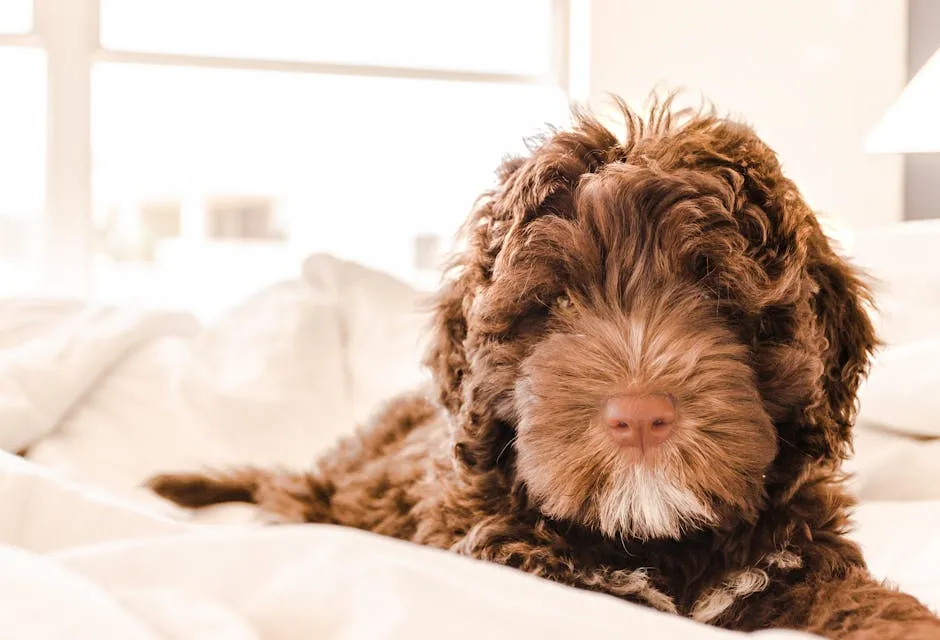
Creating a Warm Indoor Environment
Winter can be chilly, and ensuring your new dog stays warm indoors is crucial. Start by maintaining a comfortable indoor climate. Avoid drafts by sealing windows and doors. Consider using heating pads or blankets to provide extra warmth, especially for older dogs or those with short coats.
A cozy dog bed is essential. Look for beds that are insulated and elevated off cold floors. Add blankets for extra comfort. Create a designated warm area where your dog can retreat when they feel cold. This could be a room with a radiator or a space near your warmest spot in the house.
Monitor the temperature to keep it cozy for your furry friend. If it gets too cold, your dog may show signs of discomfort. Providing a warm and inviting environment helps your new companion feel at home and comfortable during winter months.
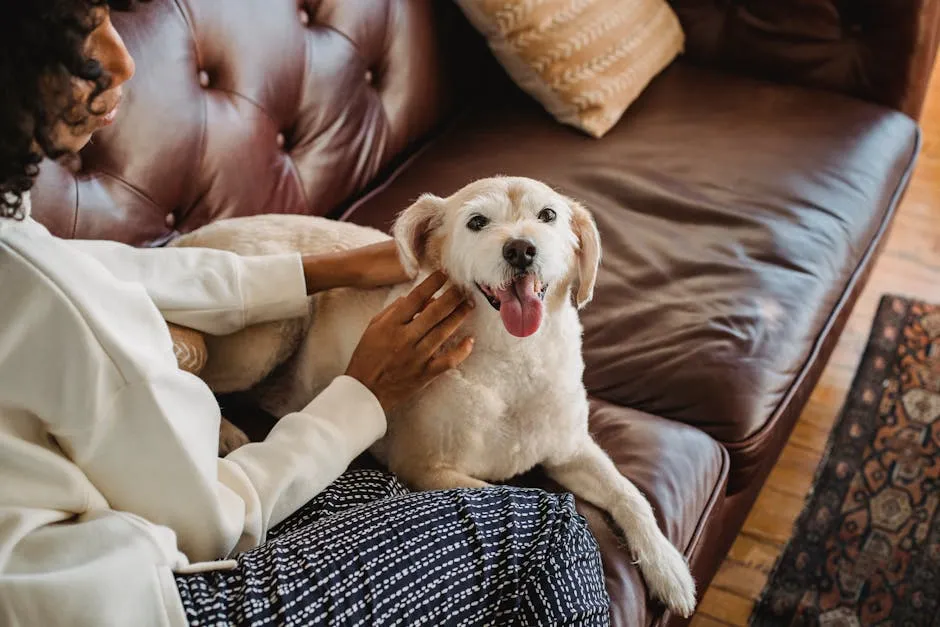
Adjusting Outdoor Activities
When it comes to outdoor activities in winter, adjustments are necessary for your new dog. Limit outdoor time, especially during extreme cold. Monitor your puppy for signs of discomfort, like shivering or lifting their paws. Short, frequent walks are best to keep your dog active while avoiding frostbite.
Engaging indoor activities are also essential. Play tug-of-war or hide and seek to burn off energy when it’s too cold outside. Providing mentally stimulating toys can keep your puppy entertained indoors.
If you need to venture outside, consider protective gear. Dog booties can shield their paws from ice and salt, while jackets provide warmth for short-haired breeds. Always keep an eye on your dog during outdoor activities, and be ready to head inside if they seem uncomfortable. By making these adjustments, you can ensure your new furry friend enjoys winter safely.

Nutrition and Diet Adjustments
Winter can impact your dog’s dietary needs. As activity levels drop, your dog may require fewer calories. Less exercise means they might gain weight if their diet remains the same. Adjusting their caloric intake helps prevent this. Consult your vet for specific recommendations based on your dog’s size, age, and breed.
Hydration is crucial, too. The dry indoor air from heating can lead to dehydration. Always ensure fresh water is available. Consider adding wet food to their diet for extra moisture. This can help keep your dog hydrated and satisfied. Remember, a well-balanced diet supports their overall health and energy during the colder months. Keeping an eye on their weight will help you adjust their diet as needed.
A little planning goes a long way in ensuring your new furry friend stays healthy and happy throughout winter.
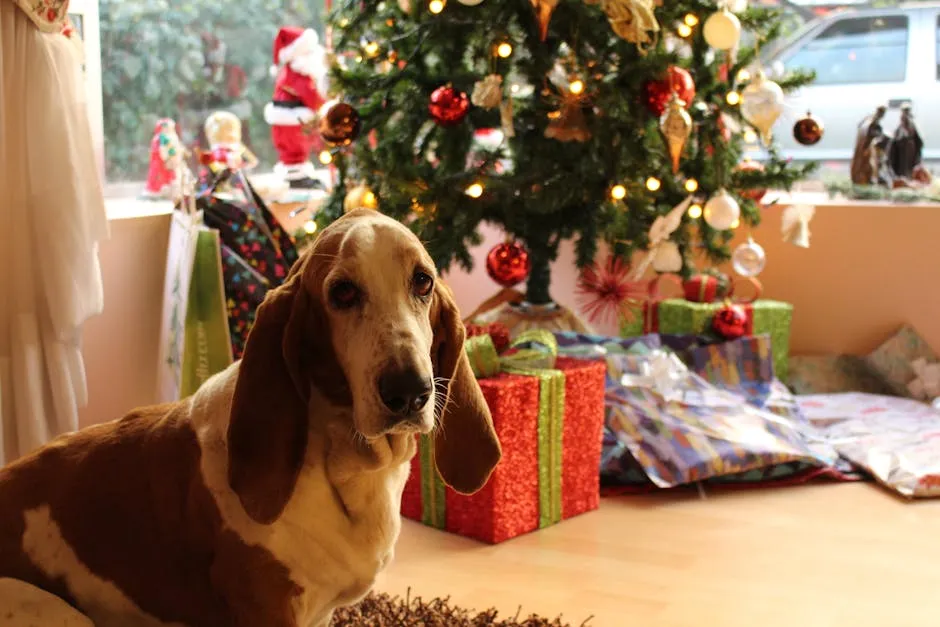
Training and Socialization in Winter
Training and socialization are essential, even in winter. Cold weather shouldn’t stop you from teaching your dog new skills. Indoor training activities can be both fun and productive. Try basic commands like sit, stay, and come. Use positive reinforcement with treats and praise. This builds a strong bond between you and your dog.
Socialization remains key, too. Look for local indoor dog parks or pet-friendly stores. These places provide safe environments for your dog to interact with others. If outdoor play is necessary, find sheltered areas to protect against harsh weather. Always supervise your dog during these interactions to ensure safety.
Remember, winter is a great time to focus on training. With a bit of creativity, you can keep your dog engaged and socialized throughout the season. Plus, a well-trained pup means fewer accidents, and who doesn’t want that?
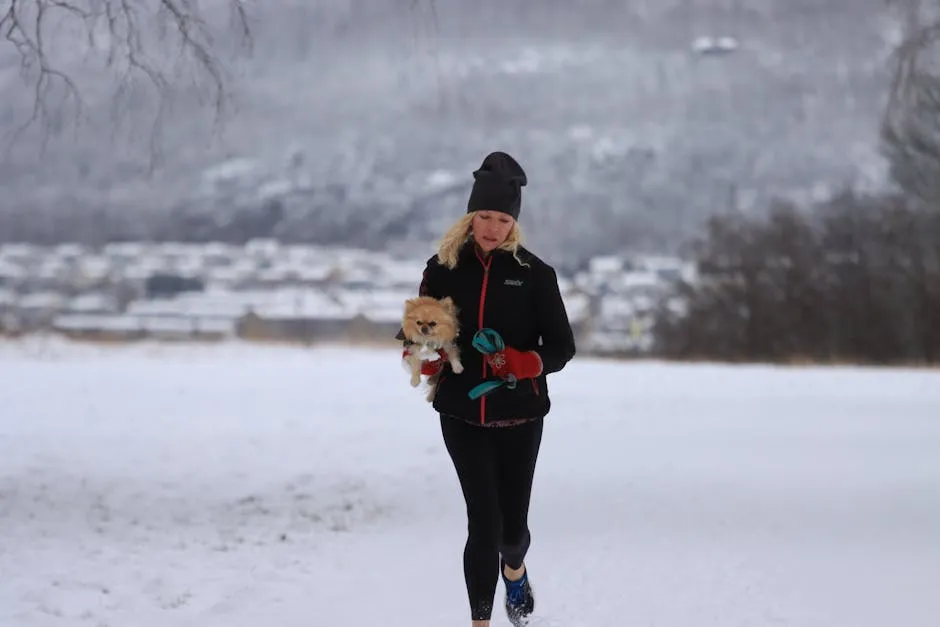
Winter Hazards to Be Aware Of
Winter brings unique hazards for your new dog. Slippery surfaces can lead to injuries. Watch for ice patches when walking. If your dog slips, they might hurt their paws or legs. Be cautious in snowy areas. Look for signs of discomfort, like limping or excessive licking of their paws.
Antifreeze is another serious threat. It’s highly toxic and has a sweet taste that attracts dogs. Always clean up spills promptly and store it out of reach. Be aware of other chemicals, like deicers, that can harm your pet’s paws.
Frostbite is another concern, especially in extreme cold. Check your dog’s ears, tail, and paws for signs of frostbite or hypothermia. Symptoms include shivering, lethargy, and cold extremities. If you notice these signs, warm your dog immediately and consult a vet. Keeping your dog safe during winter requires vigilance. With some precautions, you can ensure a happy and healthy winter experience for your furry friend.

Health Considerations for New Dogs in Winter
Bringing a new dog home during winter is exciting but requires extra care. Regular veterinary check-ups are crucial during this season. Cold weather can lead to various health issues, so keeping an eye on your pup is essential.
Frostbite and hypothermia are serious risks. Frostbite can affect areas like ears, tails, and paws. If you notice any discoloration or unusual coldness, seek help immediately. Hypothermia can make dogs lethargic and unresponsive. Signs include shivering, weakness, and slow movements.
To keep your dog healthy, monitor their behavior closely. Pay attention to how they react to the cold. If they seem uncomfortable or reluctant to go outside, it might be too chilly for them. Keeping their indoor environment warm and cozy is also vital.
Make a habit of checking their paws for cracks or injuries, especially after walks. Deicing chemicals can irritate their skin. Always clean their paws after outdoor outings to prevent any issues.
By prioritizing your new dog’s health during winter, you’ll ensure a safe and enjoyable experience for both of you. Regular vet visits and attentive care will help your furry friend thrive in their new home.

Conclusion
Preparing for a new dog during winter is essential for ensuring their comfort and safety. We discussed key areas like health, supplies, and training. Addressing winter-specific needs can create a welcoming environment for your new companion.
By taking the necessary steps to make your home safe and inviting, you set the stage for a happy and healthy relationship with your new furry friend. Don’t hesitate to reach out to your vet or pet care professionals for guidance. Your efforts will pay off as you enjoy the joy that a new dog brings into your life. And while you’re at it, why not add a little flair to your home with some scented candles for a cozy atmosphere!
FAQs
What supplies do I need to prepare for a new dog in winter?
Preparing your home for a new dog in winter is exciting! Start with the essentials. A cozy dog bed is a must. Blankets can provide extra warmth. You’ll also need sturdy food and water bowls. Choose high-quality dog food to keep them nourished. Don’t forget winter gear! A warm coat and booties protect against cold. These items will help your new furry friend feel right at home.
How can I tell if my dog is too cold during winter walks?
It’s essential to keep an eye on your dog during winter walks. Watch for signs of discomfort. Shivering is a clear indicator they are cold. If your dog lifts their paws off the ground, they might be feeling the chill. A hunched posture can also suggest they need to warm up. If you notice these signs, it’s best to head back inside quickly.
What are the best ways to keep my dog active indoors during winter?
Keeping your dog active indoors can be fun! Try engaging games like hide and seek or tug-of-war. You can also set up an obstacle course with household items. Puzzle toys can stimulate their minds and keep them occupied. Short training sessions for commands can also burn off energy. These activities help prevent boredom when outdoor walks are limited.
Are there specific winter hazards I should be aware of for my dog?
Yes, winter presents various hazards for dogs. Watch for slippery surfaces that can cause falls. Ice and snow can hide dangers like sharp objects. Be cautious with antifreeze; it’s highly toxic. Always clean up spills immediately. Certain plants can also be harmful, so check your home for toxic varieties. Stay vigilant to keep your furry friend safe.
How can I create a safe and warm environment for my new dog?
Creating a safe and warm environment is crucial for your new dog. Use heating pads or blankets in their resting area to keep them cozy. Ensure their space is free from drafts. Puppy-proof your home by removing hazardous items and securing cords. Consider using gates to limit access to unsafe areas. A warm, inviting space helps your dog feel secure and loved.
What dietary adjustments should I make for my dog in winter?
With colder months, your dog’s diet may need adjustments. Decreased activity levels can lead to weight gain, so monitor calorie intake. Consult your vet for specific recommendations based on your dog’s needs. Hydration is also vital during winter. Provide fresh water daily and consider incorporating wet food for added moisture. A balanced diet supports your dog’s health during winter.
What should I do if my dog shows signs of frostbite or hypothermia?
If you suspect frostbite or hypothermia, act quickly. Move your dog to a warm area immediately. Wrap them in a blanket to help raise their temperature. Avoid using hot water; it can cause further damage. Monitor their symptoms closely; if they worsen, contact a vet without delay. Quick action can make a significant difference in their recovery.
Please let us know what you think about our content by leaving a comment down below!
Thank you for reading till here 🙂
All images from Pexels

